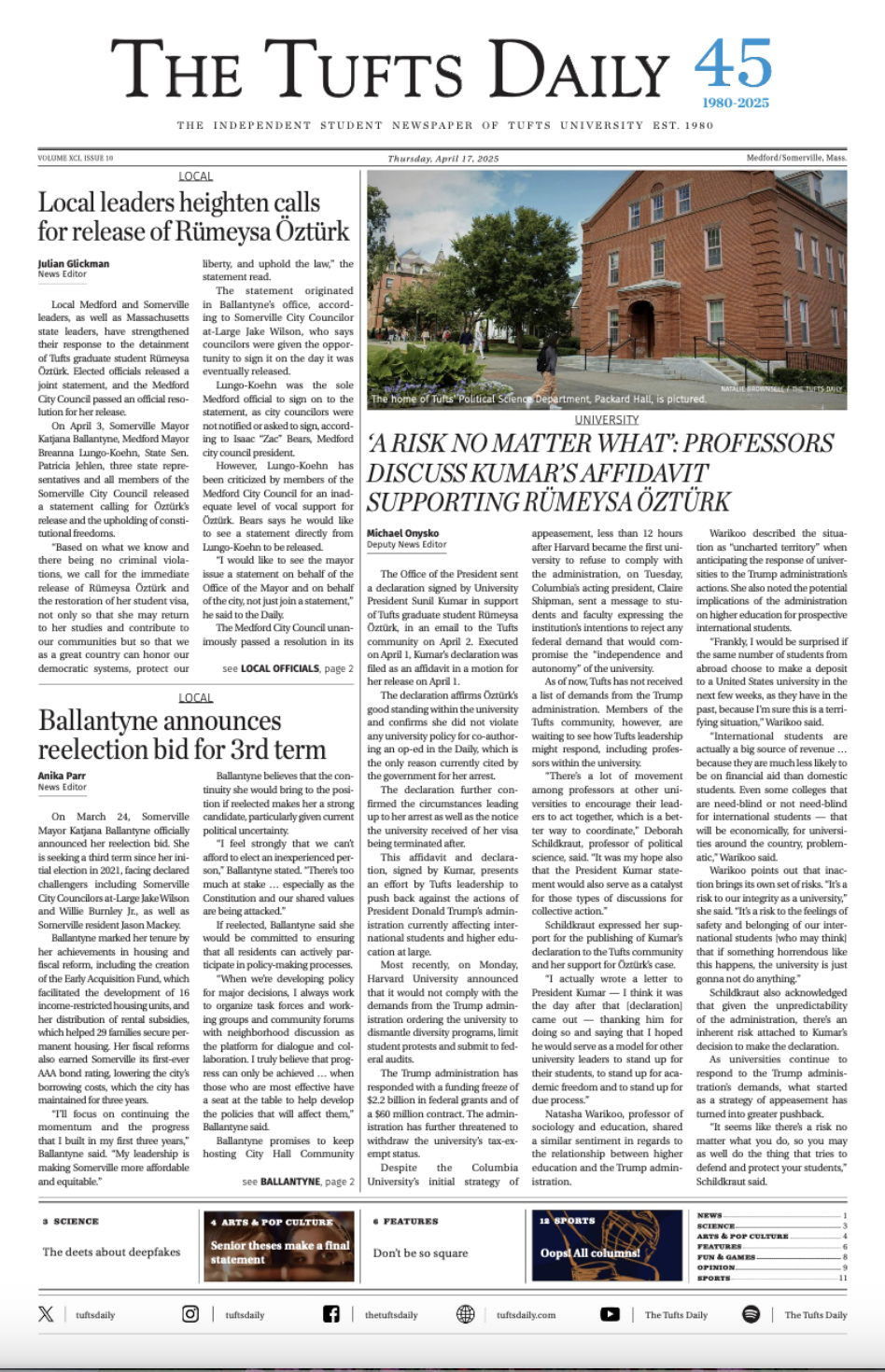On Jan. 20, 1894, Béhanzin, the 11th ruler of Dahomey — the kingdom in the area today known as Benin — stood before his subjects, fully aware it would be for the last time. Soon he would surrender Dahomey to the French, bringing three years of conflict to a close. With that, another West African kingdom fell to the spoils of colonial expansion.
“The ancestors no longer need our sacrifices,” Béhanzin proclaimed in his final speech. “They will better savor the pure homage of these loyal hearts united for the greatness of the homeland.”
Now, with her Golden Bear-winning documentary “Dahomey” (2024) that comes more than a century later, Senegalese-French director Mati Diop has given these words new life. With a focus on the repatriation of 26 artifacts stolen from their rightful land in 1892, Diop’s effort is a compelling meditation on cultural memory and identity.
The film opens in Paris, framing cheap, light-up Eiffel Tower souvenirs (these, too, are cultural artifacts in their own way). A title card explains that it’s November 2021 — the month that the 26 treasures are meant to be returned to Benin.
Though “Dahomey” is certainly not the first of its kind — Chris Marker’s “Statues Also Die” (1953) famously explored similar areas more than half a century earlier — it is Diop’s manipulation of form that makes her work both complex and original. Echoing the technique of her 2013 short “Mille Soleils,” Diop allows fantasy to seep into the pores of the film’s reality. At certain points, this means narrated dialogue from the perspective of one of the 26 statues.
“Dahomey” treats its artifacts — most prominently a sculpture of King Gezo, ruler of Dahomey from 1818–58, which has been reduced by the French to ‘Number 26’ — not as fantasy props (though his voice does growl from the dark like a monster), but as archetypes of a stolen culture. Early on, the sculpture describes itself as “cut off from the land of my birth.” Later, after its return to Benin, it pledges to “no longer mull over my incarceration in the caverns of the civilized world.”
Diop’s film is nothing if not a film about voices — the power they have and the opportunities they can create. Thus, the picture is most captivating — and most important — when the voices of the Beninese are emphasized. Diop understands this; much of the latter half of the film is made up of a debate between students at the University of Abomey-Calavi over the significance of the sculpture’s repatriation. The responses are varied: Some members of the younger generation see only a “purely political act” meant to “gratify France,” an argument with a strong foundation, with many dissidents citing that only 26 sculptures were returned out of an estimated 7,000. Nonetheless, some still see the statues’ return as an immense positive step in Benin’s history, with one student even saying she “cried for fifteen minutes” after seeing the “ingenuity” of her ancestors.
The film itself is largely not opinionated. Though its treatment of its subjects — both those of flesh and of granite — is fairly intimate, it’s clear that Diop does not find her perspective necessary to the movie’s landscape.
“This film was an attempt to respond to what, to me, restitution truly is,” Diop said in a post-screening Q&A at the Harvard Film Archive. “Not only a repatriation of stolen objects from France to Benin, but a film as a restitution act in itself which gives birth to voices — to the artifacts and the students.”
Political statement as it may be, the filmcraft of “Dahomey” is anything but fierce and assertive. Instead, much like in her previous feature, “Atlantics” (2019), Diop quietly observes through long takes filled with visual depth. The brilliant vérité scenes on the streets are a distinct example; director of photography Joséphine Drouin-Viallard’s keen eye does much of the work, but it is Diop’s unique sense of poetic rhythm that gives the audience an acute sense of setting. It runs in the family: Mati is every bit the worthy successor of her uncle, the revered Senegalese filmmaker Djibril Diop Mambéty.
Even in the scenes of fiery argument between students, Diop intercuts shots of other students, some raising their hands and clapping in support and some merely listening along. The lens is solely concerned with the people — all the people.
At its core, “Dahomey” is a film about matter. The treasures are material. The borders that held them in captivity are immaterial. When combined, these forces have the capacity to call into question the meaning of historical identity itself.
As the West continues to plunder and culture continues to come under attack, “Dahomey” reminds one that history is not something found in sealed museum glass, but something still living, still contested, still speaking.
“Dahomey” is streaming on MUBI.






